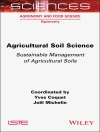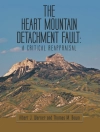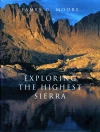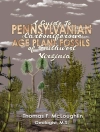This book offers essential information on geospatial technologies for water resource management and highlights the latest GIS and geostatistics techniques as they relate to groundwater.
Groundwater is inarguably India’s single most important natural resource. It is the foundation of millions of Indian farmers’ livelihood security and the primary source of drinking water for a vast majority of Indians in rural and urban areas. The prospects of continued high rates of growth in the Indian economy will, to a great extent, depend on how judiciously we can manage groundwater in the years to come.
Mục lục
Part 1. Fundamentals of Geostatistics and Geospatial Technologies.- Chapter 1. Principles of geostatistics.- Chapter 2. Spatial variability and semivariogram theory.- Chapter 3. Kriging and its type (Ordinary krigging, co-kriging and regression kriging).- Chapter 4. Lognormal kriging, probability kriging and Indicator kriging.- Part 2. Groundwater Availability: Exploration, depletion, Recharge and Storage.- Chapter 5. Field-based monitoring of groundwater.- Chapter 6. Satellite-based monitoring of groundwater depletion.
Giới thiệu về tác giả
Dr. Partha Pratim Adhikary, presently Senior Scientist (Soil Physics and Soil and Water Conservation), has been working at ICAR-Indian Institute of Soil and Water Conservation (IISWC), Research Center, Sunabeda, Koraput (Odisha), India. He obtained his Bachelor’s degree in Agriculture from Bidhan Chandra Krishi Viswavidyalaya (BCKVV), Mohanpur, West Bengal; Master’s degree in Soil Science from Chaudhury Charan Singh Haryana Agricultural University (CCSHAU), Hisar, Haryana, and Ph.D. in Agricultural Physics from ICAR-Indian Agricultural Research Institute (IARI), New Delhi, India. Dr. Adhikary has more than 100 publications in journals of national and international repute, edited books, book chapters, popular articles, technology brochures, technical reports and bulletins.Dr. Pravat Kumar Shit, Assistant Professor, has been working in the Department of Geography, Raja N. L. Khan Women’s College (Autonomous), Gope Palace, Midnapore, West Bengal, India. He received his Ph.D.in Geography (Applied Geomorphology) from Vidyasagar University (India) in 2013, M.Sc. in Geography and Environment Management from Vidyasagar University in 2005 and PG Diploma in Remote Sensing & GIS from Sambalpur University in 2015. His main fields of research are soil erosion spatial modelling, water resources and natural resources mapping and modelling, and he published more than 45 international and national research articles in various renowned journals. He published three (03) books. Dr. Shit is Associate Editor and on the editorial boards of three international journal in geography and earth environment science.
Dr. Priyabrata Santra, Principal Scientist (Soil Physics/Soil & Water Conservation), has been working in Indian Council of Agricultural Research at Central Arid Zone Research Institute (CAZRI) since 2003. He obtained his Master’s degree in Agricultural Physics from Indian Agricultural Research Institute, New Delhi, in 2001, and Ph.D. in Soil Physics/Hydrology in 2009 from Indian Institute of Technology, Kharagpur. He published 50 research papers in reputed international journals and one edited book and one research bulletin.
Gouri Sankar Bhunia received a Ph.D. from the University of Calcutta, India, in 2015. His Ph.D. dissertation work focused on environmental control measures of infectious disease using geospatial technology. His research interests include environmental modelling, risk assessment, natural resources mapping and modelling, data mining and information retrieval using geospatial technology. Dr. Bhunia is Associate Editor and on the editorial boards of three international journal in Health GIS and Geosciences. Dr. Bhunia has published more than 50 articles in various journals in Scopus indexed.
Ashwani Kumar Tiwari is working as an Assistant Professor in the School of Environmental Sciences at Jawaharlal Nehru University, New Delhi, India. His teaching and research areas are water resources management and GIS, hydro-geochemistry, pollution of water resources by geogenic and anthropogenic activities, groundwater-seawater interaction and aquifer vulnerability. He was a Postdoctoral Researcher at the Department of Environment, Land and Infrastructure Engineering, Politecnico di Torino, Turin, Italy for around four years. He has completed his M.Sc., M.Phil., and Ph.D. in Environmental Science. He was awarded Erasmus Mundus and Marie Skłodowska-Curie Actions Scholarships. He has published several research articles in various reputed international and national journals. He has published an Edited Book “Applied Geology: Approaches to Future Resource Management” in Springer Chem with late Prof. De Maio in July 2020. His works on respective fields are very well appreciated by the many workers across the world. He has served as a Reviewer for many international journals.
Prof. (Dr.) B. S. Chaudhary is working as Chairman, Department of Geophysics, Kurukshetra University, Kurukshetra, India, since December 23, 2017. Prof. Chaudhary was awarded DAAD (German Academic Exchange Services) fellowship at the University of Freiburg, Germany from 1997 to 1999 and worked on applications of Indian Remote Sensing Satellite data usage for various aspects in Black Forest region, Germany. He was awarded Ph.D. on “Integrated Land And Water Resources Management in Southern Part of Haryana, India Using Remote Sensing And GIS” in the year 2003. He is working in the domain of remote sensing and GIS applications for natural resources mapping and management, specializing in water resources, geo-environmental studies and disaster management for last more than 28 years. He has supervised 7 Ph.D.s in the domain of groundwater, snowmelt runoff, snowpack characterization, watershed conservation and management. He has more than 80 publications in various national/international journals and conference proceedings. He is also an editorial team member of an edited book on “Applications and Challenges of Geospatial Technology: Potential and Future Trends” from Springer Publishers (published on November 25, 2018) along with other co-editors.












